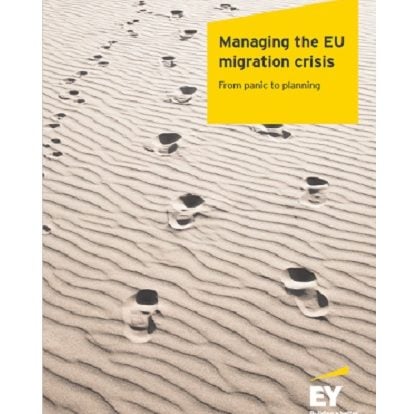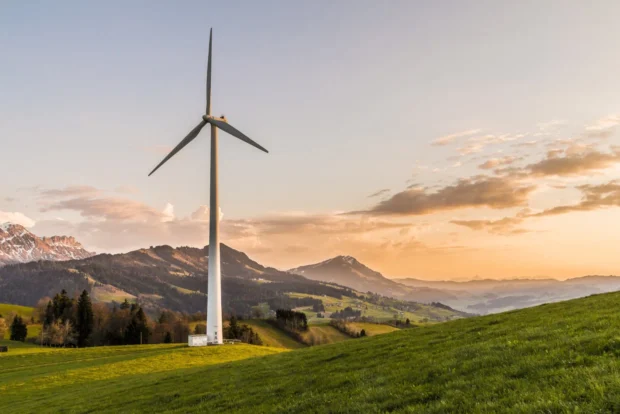Money talks: Integrating climate action and government budgeting focuses minds, say European leaders
During a recent Global Government Forum webinar, senior representatives from Sweden, Estonia and the European Commission discussed attracting green investment and how sustainability can be embedded in government spending decisions.
COP26 was a pivotal moment for green economic policy. In 2021, the introduction of Finance Day to the conference agenda, equating financial decisions with green initiatives, encouraged the EU and its participating countries to think more critically about their climate goals.
At a recent Global Government Forum webinar, civil servants representing Sweden, Estonia and the EU discussed ways to implement, encourage and incentivise climate-positive economic strategy, sharing country-specific initiatives that they hope will inspire their colleagues.

Green financial decisions happen at a local and global scale, concerned with infrastructure, international partnership and investment policy. In his opening remarks, Mattias Frumerie, climate ambassador and head of the delegation to the United Nations Framework Convention on Climate Change in Sweden’s Ministry of Climate and Enterprise, emphasised the importance of the positive feedback loop that policy, technology and finance have on one another in climate reform.
“Once you accelerate your policy action, you will also create the demand for more innovative technology,” he said. “Once that kind of technology is in place, you would also feel that you’re confident in accelerating your policy action.”
He added: “That’s going to be sort of a virtuous circle in accelerating action.”
Frumerie breaks down this concept by defining “policy” as how a country implements the Paris Agreement and European Green Deal in a national context, stating that Sweden embeds it in its “national climate policy framework setting out to 2045 targets, when we will be net zero at the latest, and also a number of institutions which have been put in place to monitor the implementation of that policy framework”.
Technology, in this case, refers to innovation nationally, but also between partner countries.
“Technology is very much about the kinds of solutions that in our case the Swedish business actors can offer to accelerate and transition not only in Sweden, but also of course, globally,” Frumerie said.
Climate impact of spending proposals
And most importantly, on the theme with the webinar topic at hand, is the financial aspect of the feedback loop. Sweden has begun to implement climate action in the budget-setting process. Any proposal that is presented to the Ministry of Finance must run impact analyses that look at the job growth, gender and climate impacts.
Frumerie explained that this is a “way of sensitising ourselves – not only us within the Ministry of Climate and Enterprise, but also across ministries”. He said it also forces groups otherwise distant from climate policy to consider “how does this particular budget proposal impact on climate and environment?”
These analyses further create evidence and data to support Sweden’s progress against Paris Agreement and COP28 goals.
Sweden has additionally rooted climate goals in its development fund. “Whether it’s in education and health or infrastructure, we can assure that there is a climate aspect,” Frumerie said.
This also takes an international role when developed nations engage with both developed and developing partner countries to assess what support they need to prioritise green solutions.
“I’ve heard examples from African countries, for example, where they allocate maybe 20% of the national budget for climate adaptation issues because that is such an immediate measure,” he commented.
Lastly, Frumerie touched on the importance of climate investment involving both domestic and international capital. He noted that by making your country a destination for climate investment, you additionally open the gateway for unrelated, general investors that are looking for climate-friendly nations to finance.
In Estonia, economy meets environment
Eili Lepik, head of the green reform department in Estonia’s Ministry of Finance, began her opening statement with an acknowledgement of just how large the goals that countries must undertake to meet the targets of COP28 are. Like Frumerie, she believes that reaching climate objectives is part of a greater, interdepartmental long-term strategy – one that must be integrated into budget planning.
The ‘Estonia 2035’ development strategy document is a parliament-adopted initiative that resulted from the ideas and collaboration of 70,000 Estonians. Since its passage in October 2020, Estonia 2035 has facilitated developments across five key principles: people, society, economy, living environment and governance.

These factors are being monitored across indexes and public polling, demonstrated in a consistently updated tree graphic. The ‘Tree of Truth’ visually breaks down the question of ‘How is our country doing?’ into 15 different branches of a tree, illustrated through green, yellow and red leaves. Lepik claims that while Estonia is still in an autumn phase of its environment and energy branches, the eight green ‘the target has been met’ leaves on the environment branch are a testament to the country’s commitment to meeting its goals well before the 2035 deadline.
The strategy document is the first collaboration between environmental and economic sectors to aim for a “socially responsible target, that the economy not only should be strong and innovative, but it should be also responsible toward people and toward environments”.
Continuing the tree theme, Lepik likens the previous Estonian climate policies with a jungle and stated: “We wanted to diminish the number of strategic documents in Estonia.”
Read more: The fight against climate change requires greater transparency
The 2035 document will hopefully streamline Estonia’s climate advancements, a concern also raised by Frumerie who said: “Sometimes my sense is that there are too many different types of initiatives engaged in this. So, we need to also make sure that we’re sort of all moving in the same direction.”
This idea of united policy is exactly the goal of Alessandra Sgobbi, who works as the head of unit for international affairs and climate finance and as directorate-general for climate action in the European Commission.

“In our European Energy and Climate Governance Regulation, we do explicitly call for countries to set a consultative platform to design the National Energy and Climate Plans because it is critical to hear everybody’s view,” she said. “The just part of the climate transition cannot be ignored and leaving no one behind is one of the core principles of the European Green Deal.”
Progress made at COP28 is another example of collaborative climate solution building. Sgobbi found that the advancements made in Dubai during the conference “were extremely successful from our perspective in setting and resetting, if you wish, the ambition in terms of climate mitigation”.
Creating climate law
On an individual country level, drafting and passing climate law is crucial to the implementation and globalisation of green government. Most European countries have some form of drafted legislation but Lepik admits that Estonia has fallen slightly behind in this regard.
“We haven’t had it,” she stated. “It’s a big step for us, because we had the climate policy, we have the long-term strategy. But they are just strategies, and they don’t have the legal power.”
Creating climate law is much more than drafting legislation and enforcing it – the awareness campaigns and public information streams are critical to the support of a constituency. “I am a strong believer of open government – that we do everything openly and everybody could discuss,” said Lepik.
Sgobbi also believes in this principle of openness. She said: “What is needed from governments is to not hide some of the difficult facts,” noting that while climate policies will change the livelihoods of some, there need to not only be policies that soften the negative impacts, but also ensure constituents understand the end goals.
Lepik, like the other panellists, believes that there are weaknesses within climate policies and that there is always more that government can be doing to use public procurement to drive greener public spending, to avoid ‘greenwashing’, and to collaborate with the private sector.
“If you consider that approximately a quarter of the public procurement is around a quarter of the country’s GDP – if this is not spent, according to the green and climate targets and goals, [it] is not making an impact,” she said.
This ties directly into the involvement of private actors in that “encouraging using green public procurement, they also encourage green investments or green private sector services, green private sector products, and that’s in a kind of easy circle,” said Lepik.
Read more: Challenging the accepted wisdom: why economics isn’t ‘up to the job’ of tackling climate change
The latest Climate Policy Initiative reports identify a need for an increase in climate finance “by at least five times”, according to Sgobbi, to meet the current investment goals. Despite a doubling in global climate finance, there is still a €500 billion ( US$544 billion) public investment gap in the EU. These investment needs are projected to increase in the transport, economic and energy sectors.
Private investors, like the general public, require transparency and accountability from the governments they wish to invest in. Panellists all touched upon a taxonomy that currently exists within their organisations but acknowledged a need for further development of their systems of disclosure.
Overall, the transition to green government spending lies in the hands of civil servants who wish to incorporate climate-friendly budgeting into their day-to-day policy actions.
“We’ve come to a place in the transition, both within countries in Europe and globally, where the impacts are being felt more clearly, by individuals, by societies, by companies,” said Frumerie.
He added that this calls for actions and policies that address the concerns of these parties.
Panellists responded to audience questions following their opening remarks. Listen to the webinar in full to learn more about:
- Incentivising and disincentivising public and private practices.
- Pandemic and recovery packages, demonstrating a need for better transitional policies.
- The geopolitical challenges of implementing and meeting climate goals.
- National strategy and budgeting techniques to include all actors in climate development projects.
Stay up to date: Sign up for Global Government Forum’s email newsletter




















